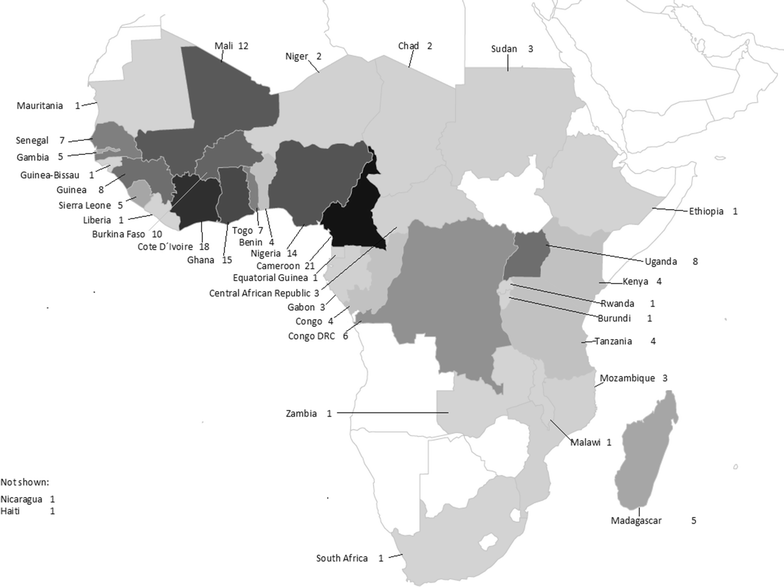Severe malaria in Europe: an 8-year multi-centre observational study
- PMID: 28143519
- PMCID: PMC5286792
- DOI: 10.1186/s12936-016-1673-z
Severe malaria in Europe: an 8-year multi-centre observational study
Abstract
Background: Malaria remains one of the most serious infections for travellers to tropical countries. Due to the lack of harmonized guidelines a large variety of treatment regimens is used in Europe to treat severe malaria.
Methods: The European Network for Tropical Medicine and Travel Health (TropNet) conducted an 8-year, multicentre, observational study to analyse epidemiology, treatment practices and outcomes of severe malaria in its member sites across Europe. Physicians at participating TropNet centres were asked to report pseudonymized retrospective data from all patients treated at their centre for microscopically confirmed severe Plasmodium falciparum malaria according to the 2006 WHO criteria.
Results: From 2006 to 2014 a total of 185 patients with severe malaria treated in 12 European countries were included. Three patients died, resulting in a 28-day survival rate of 98.4%. The majority of infections were acquired in West Africa (109/185, 59%). The proportion of patients treated with intravenous artesunate increased from 27% in 2006 to 60% in 2013. Altogether, 56 different combinations of intravenous and oral drugs were used across 28 study centres. The risk of acute renal failure (36 vs 17% p = 0.04) or cerebral malaria (54 vs 20%, p = 0.001) was significantly higher in patients ≥60 years than in younger patients. Respiratory distress with the need for mechanical ventilation was significantly associated with the risk of death in the study population (13 vs 0%, p = 0.001). Post-artemisinin delayed haemolysis was reported in 19/70 (27%) patients treated with intravenous artesunate.
Conclusion: The majority of patients with severe malaria in this study were tourists or migrants acquiring the infection in West Africa. Intravenous artesunate is increasingly used for treatment of severe malaria in many European treatment centres and can be given safely to European patients with severe malaria. Patients treated with intravenous artesunate should be followed up to detect and manage late haemolytic events.
Keywords: Artesunate; Clinical study; Europe; Falciparum; Malaria; Plasmodium; Quinine; Severe malaria.
Figures


References
-
- ECDC . Annual epidemiological report 2014—emerging and vector-borne diseases. Stockholm: ECDC; 2014.
-
- Muhlberger N, Jelinek T, Behrens RH, Gjorup I, Coulaud JP, Clerinx J, et al. Age as a risk factor for severe manifestations and fatal outcome of falciparum malaria in European patients: observations from TropNetEurop and SIMPID surveillance data. Clin Infect Dis. 2003;36:990–995. doi: 10.1086/374224. - DOI - PubMed
-
- van Genderen PJ, van Thiel PP, Mulder PG, Overbosch D, Dutch Schiphol Airport Study Group Trends in the knowledge, attitudes and practices of travel risk groups towards prevention of malaria: results from the Dutch Schiphol Airport Survey. Malar J. 2012;11:179. doi: 10.1186/1475-2875-11-179. - DOI - PMC - PubMed

